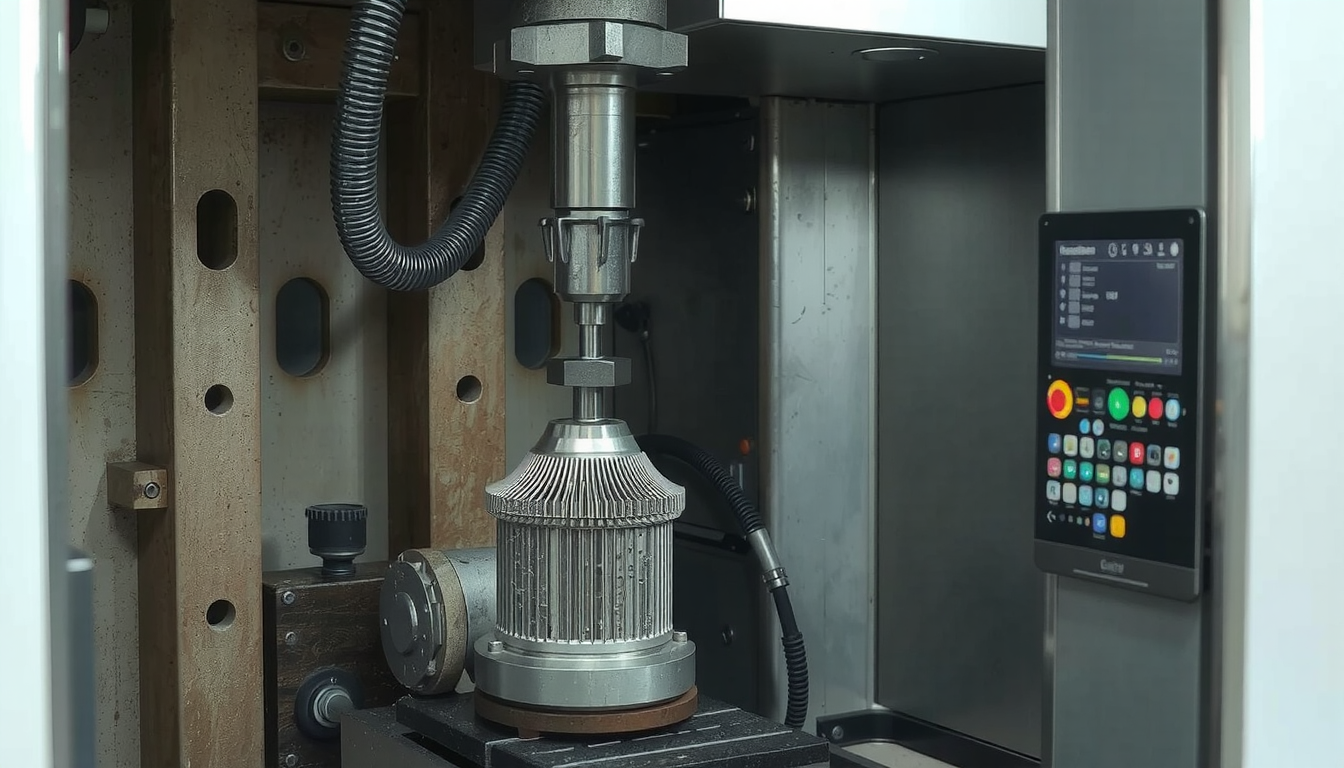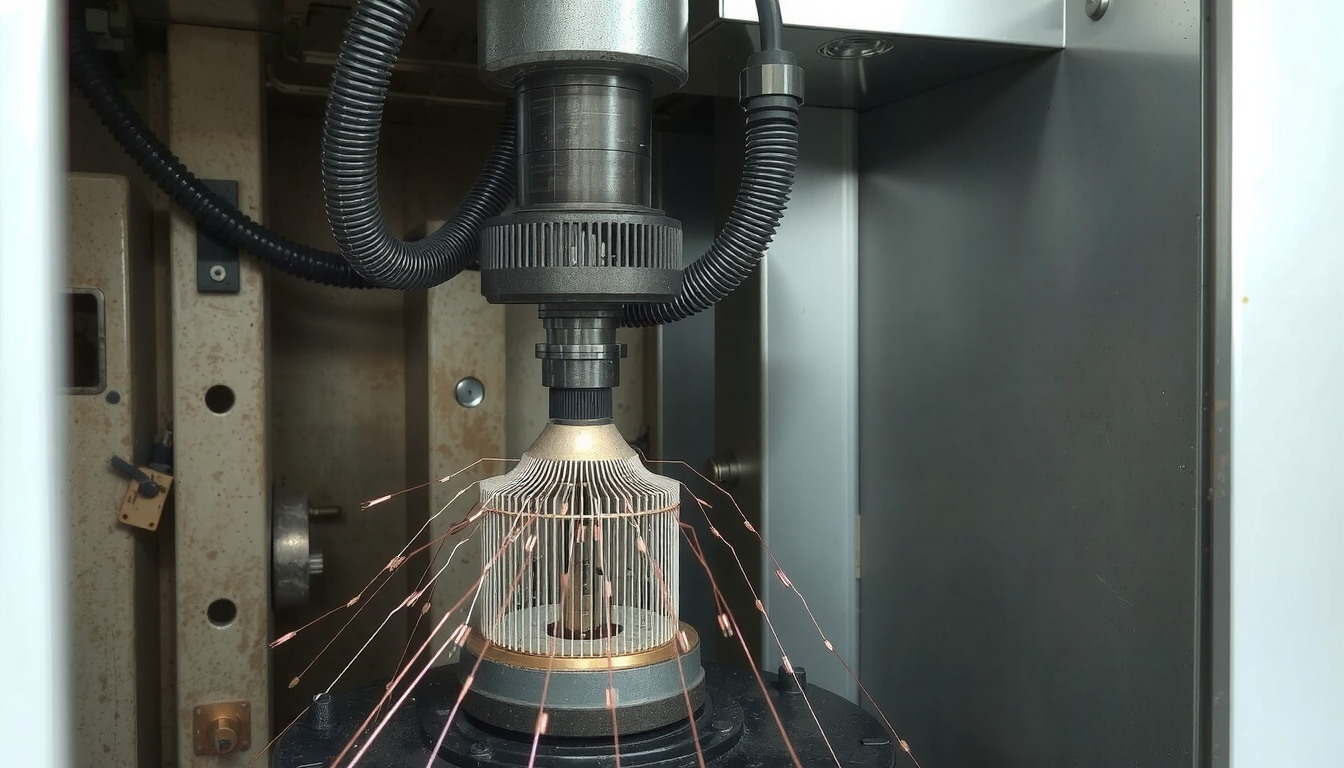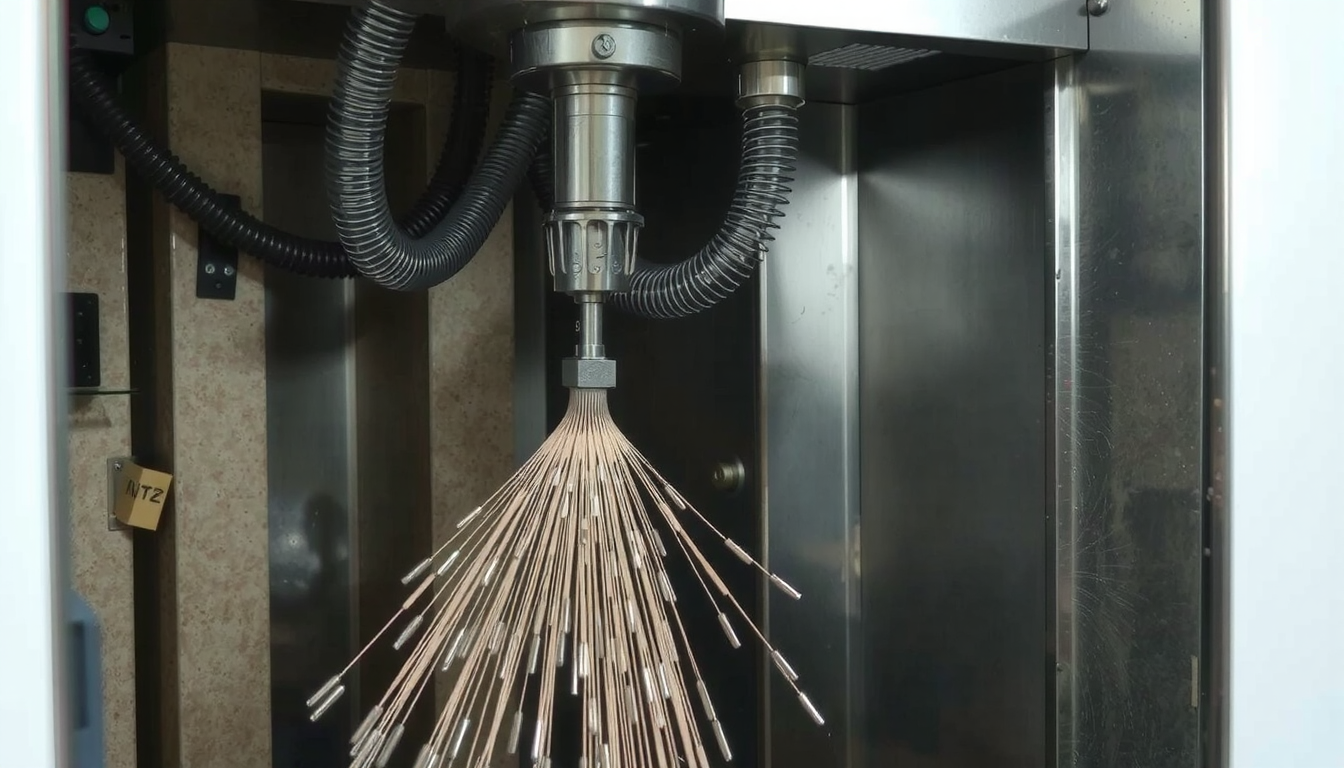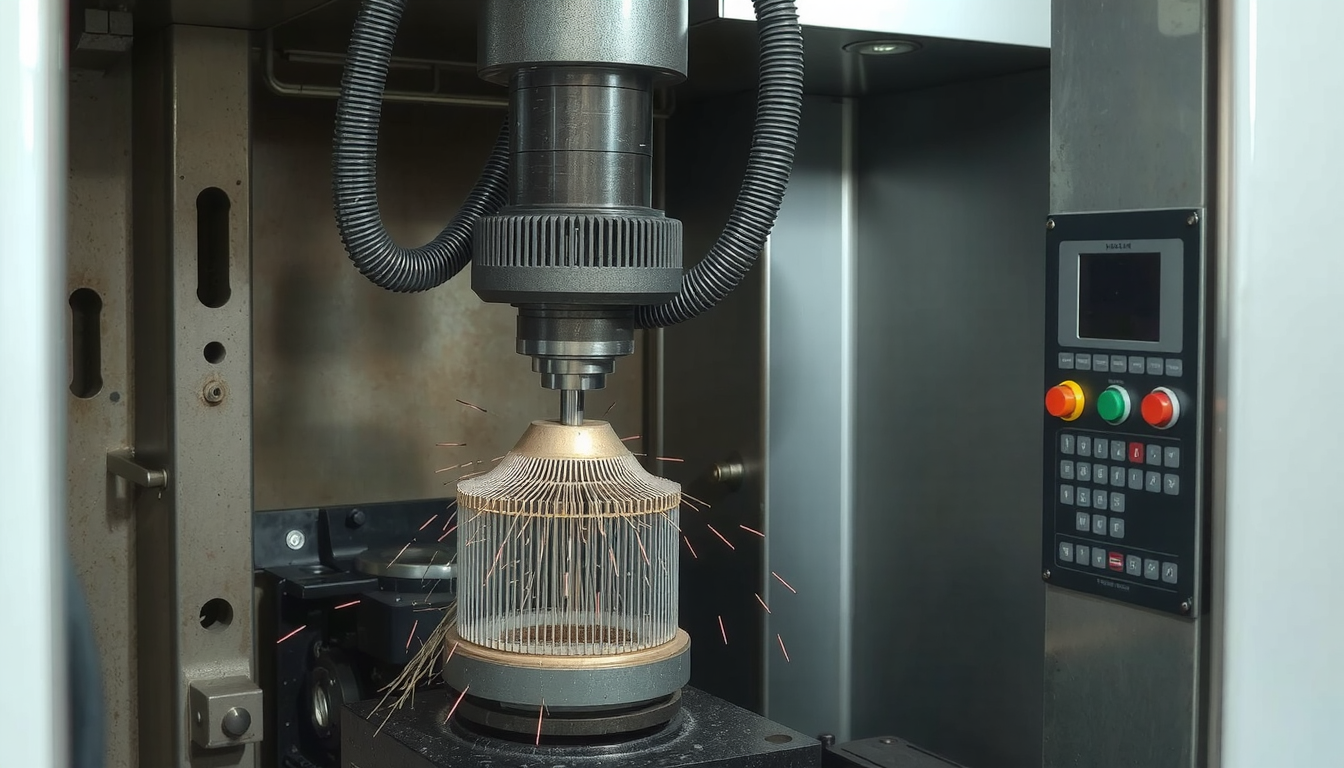It can be really challenging to choose between CNC milling and turning. We can simplify that for you. Think of CNC turning as a potter’s wheel. The material spins, and a tool shapes it. Now think of milling as stone carving. The workpiece is motionless, and a tool moves over it to cut it.

Both operations subtract material from a piece to create a part. Still, the most important advantage you have when choosing is the right technology. It can affect your project costs, the accuracy of the project, and how fast it is done. This guide is not limited to simple definitions. We will take you through the whole decision process step by step to help you identify the best method for your specific needs.
The Basic Features of CNC Turning
CNC turning is one of the essential techniques in manufacturing now. It is a process that creates round, cylindrical parts. It carries a reputation for being a fast and cost-effective technique, mainly when doing a lot of parts.
The Mechanism: The Lathe in Action
During CNC turning, a long, solid piece of material is held in a chuck. The chuck runs the material at very high speeds.
A cutting tool that doesn’t move is set to move along the spinning material. It cuts away material to make the final shape. This includes key steps like facing (making a flat end), making grooves, drilling holes, and cutting threads. This procedure is very good at reducing huge amounts of material to create a circular figure.
Common Uses and Shapes
CNC turning fits mainly cylindrical parts; some common instances are the following:
- Shafts
- Pins
- Rods
- Housings
- Custom bushings and pulleys
A Note on Swiss-Style Turning for High Precision
For very small or long thin parts, a special process called Swiss turning is performed. It is a type of CNC turning that is more precise due to an auxiliary support on one side. If you seek ultimate accuracy in the project, you may look into the Swiss CNC turning services which are available.
The Basic Features of CNC Milling
CNC milling is the process able to generate the most diverse shapes. It can even manufacture geometries that are not attainable with turning. Instead of working with a rotating workpiece, milling uses the spin of a rotating tool which moves to a fixed workpiece; therefore, it is well suited for applications where a part is not round.

The Mechanism: The Mill and the Multi-Axis Advantage
In CNC milling, the workpiece is held to a table inside the machine. A multi-blade cutting tool is installed in the spindle and is set to operate in the forward direction. The machine moves this tool along different paths to carve material from the workpiece.
The direction available for a machine to operate in is the main factor that determines its capabilities. A 3-axis mill can move on left-right (X), forward-back (Y), and up-down (Z) directions. Superior 4-axis and 5-axis machines not only do the above functions but can also rotate the tool or the part. This gives them the ability to create complex shapes in just one setup.
Common Uses and Shapes
A CNC milling machine is commonly used to produce parts that have flat surfaces, pockets, and holes. Examples are:
- Engine blocks
- Brackets and cases
- Tools and molds
- Complex parts with flat faces and off-center features
On CNC Milling versus Turning: A Direct Comparison
The most important factor in making the right decision is being able to tell the differences between cnc milling turning. Although both processes are used for shaping, their different working principles lend them to different strengths. Generally, the choice is about the shape and features of the component.
This table offers a straightforward guide to make it easier for you to see the trade-offs.
| Feature | CNC Turning | CNC Milling |
|---|---|---|
| Core Motion | Part spins, tool stays still. | Tool spins, part stays still (or moves on lower axes). |
| Best for… | Round, cone, or circular parts. | Box-like, flat, or complex non-round parts. |
| Primary Machine | Lathe or Turning Center | Mill or Machining Center |
| Cost-Effectiveness | Usually cheaper for lots of round parts. | More flexible, but can cost more for simple round shapes. |
| Surface Finish | Can make great finishes on round surfaces. | Finish can change based on tool path and step-over. |
| Material Waste | Can be higher for parts with large size changes. | Usually wastes less material for block-like parts. |
Choosing the Best Process: A Step-by-Step Practical Guide
The transition from abstract concepts to real-life project implementation presupposes a scientific model. Making a decision about the cnc milling turning process first shouldn’t be a gamble; rather it should be a proven action based on the design, available budget, and tolerance requirements. We will provide you with a framework of questions to help in your decision-making.
Start with Part Shape
The basic shape of your part is the main factor in the choice to be made. Let us examine your 3D model. Is it more like a cylinder? If the answer is yes, the first process you should consider is a CNC turning service. This operation is specifically designed for circular parts and will likely be the most suitable option.

Does your part have intricate features that are not located on the center line? For instance, does it have flat faces, deep pockets, or holes on its side? If so, CNC milling is probably needed to create those features.
A Checklist for Your Decision
Here is a list of useful checkpoints. You will find that a higher number of checkmarks in one column will simplify your decision process.
- [ ] Main Shape: Is the part more than 80% round? -> Lean towards Turning.
- [ ] Feature Complexity: Does it have features that cannot be made by spinning the part, like a square pocket on the side? -> Milling or Mill-Turn needed.
- [ ] Tolerances: Are the tightest measurements on diameters? -> Turning is often better for diameter control. Are they on the location of features? -> Milling often gives better position control.
- [ ] Production Volume: Are you making thousands of simple, identical round parts? -> Turning is often faster and cheaper for high volumes.
- [ ] Material & Setup: Is your raw material a standard round bar? -> Turning is a natural fit. Is it a custom-cut block or a cast part? -> Milling is better for starting with non-round stock.
A common mistake according to our experience as machinists is designing a part that could be turned but includes a single, simple milled feature. If two machines are needed, that can double the setup time. It should be decided if that feature can be redesigned or whether the more advanced process is worth it.
Beyond the Basics: The Power of Mill-Turn Centers
Sometimes, a part may not be just a “milling part” or a “turning part.” Many modern components are complex hybrids, having both round profiles and milled features. A third option—mill-turn machining—is possible for these parts.
What Are Mill-Turn Machines?
Mill-turn centers are modern, hybrid-combined CNC machines. They come with the full CNC lathe and CNC mill ability but in one powerful unit. These modern CNC Turning & Milling Centers can do both spinning and carving operations on a part without ever moving it. The machine can turn a diameter, then stop the spin and use a rotating tool to mill a flat or drill a hole.
The “Done-in-One” Advantage
The single-setup approach is so beneficial that it is often dubbed “done-in-one” manufacturing.
- Improved Accuracy: Because there is no part movement between machines, errors arising from re-clamping are eliminated. The relationship between turned and milled features is extremely accurate.
- Shorter Lead Times: Setting up multiple operations on different machines is time-consuming. A mill-turn center can produce the part in one continuous operation, which cuts production time significantly.
- Complex Shapes: This technology enables the production of parts that were either too complicated or were thought to be too costly in the past. Consider the manufacturing of camshafts, intricate medical devices, or aerospace parts with a multitude of features.
When to Consider Mill-Turn Machining
Mill-turning should be considered in two general situations. The first is for any part that has both large round profiles and complicated milled features. A good case is a shaft with keyways, off-center holes, and flats.

Second, when the utmost accuracy between turned and milled features is your top priority. If the milled pocket’s location concerning the turned diameter needs to be perfect, mill-turn is supreme in guaranteeing it.
Materials and Uses: Where CNC Milling and Turning Shine
Both CNC milling and turning can process a plethora of materials. The right material is chosen depending on the application of the part, such as the requirement of strength, weight, or heat resistance. These processes are the pillars of various major industries.
Common Materials
A lot of plastics and metals can be formed with CNC machines. The most frequently used are:
- Metals: Aluminum, Stainless Steel, Brass, Titanium, Mild Steel
- Plastics: ABS, PEEK, Nylon, Polycarbonate
Industry Snapshots
Several industries count on CNC milling and turning to make critical parts. These comprehensive CNC machining services are vital for the manufacture of high-stake components.
- Aerospace: Turbine blades and complex structural parts are made using milling. High-pressure fittings and fasteners are often turned.
- Automotive: Engine blocks and transmission cases are classic milling instances. Driveshafts, pistons, and valves are processed with turning.
- Medical: Custom surgical instruments and other device cases are milled. Bone implants like bone screws often need both turning and milling.
- Electronics: Heatsinks with complex fins are milled from aluminum. Custom connectors and standoffs are configured using turning.
Working with the Right CNC Machining Service
The ultimate quality of a part is strongly affected by the capabilities of a manufacturing partner. A machine is only as good as the team operating it. Finding the right supplier is a fundamental step in ensuring that your project is a success.
Some of the key things you should ask a potential partner:
- Equipment & Abilities: Do they have the right machines for your part? This includes 5-axis mills, mill-turn centers, or Swiss lathes if needed.
- Experience & Know-how: Have they made parts like yours before? Ask about their experience with your chosen material and part complexity.
- Quality Control: How do they ensure every part meets your drawing? Look for certifications like ISO 9001 and a dedicated quality assurance department.
Choosing a partner that has already proven its success is very important. At Mekalite, we are proud of our deep know-how and pioneering technology.
FAQ about CNC Milling and Turning
Is CNC milling or turning more expensive?
It varies by part. For a simple round part in high amounts, turning is almost always faster and cheaper. A single complex, boxy part can only be milled. The cost depends on machine time, setup complexity, and programming needs rather than the process name itself.
Can a single part need both CNC milling and turning?
Yes, this is very common. A part may be turned on a lathe to create its main round body. Then, it is moved to a mill to add features like flats, pockets, or holes. For the highest accuracy and speed, a mill-turn center can do both operations in one setup.
What is the typical tolerance for CNC milling and turning?
Standard tolerances for both processes are usually within +/- 0.125 mm (+/- 0.005 inches). However, with careful planning and precision machining, it is common to achieve much tighter tolerances. Many shops can hold +/- 0.025 mm (+/- 0.001 inches), and specialized processes can be even more accurate.
What file format do I need to get a CNC part made?
Most machine shops work with 3D CAD files. The most universal formats are STEP (.stp or .step) and IGES (.igs or .iges). These files contain the 3D geometry of your part. Native files from software like SolidWorks (.sldprt) or Fusion 360 are also widely accepted.
How does “live tooling” on a lathe relate to milling?
Live tooling refers to powered cutting tools on a CNC lathe. These tools, such as end mills or drills, can spin independently of the main chuck. This gives a lathe milling and drilling abilities. It allows the machine to create off-center holes, slots, or flats on the part, bridging the gap between a standard lathe and a full mill-turn center.
The choice between CNC milling and turning is not about which is better. It is about picking the right tool for the job. Your decision should be guided by part shape, complexity, and cost. With the knowledge from this guide, you can confidently choose the best path for your next project.

